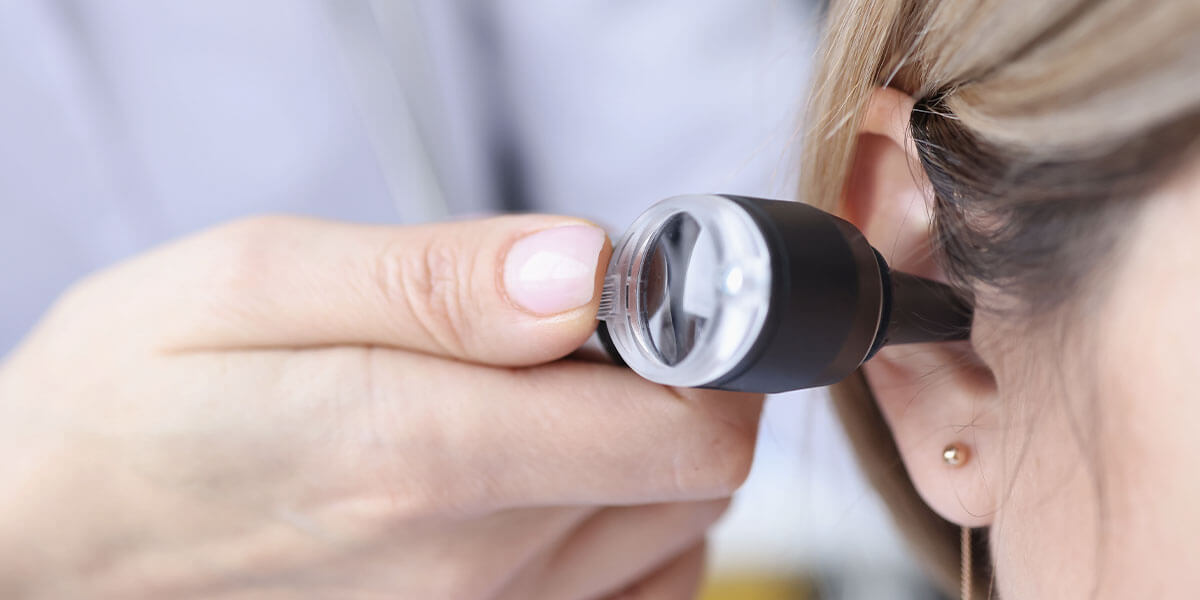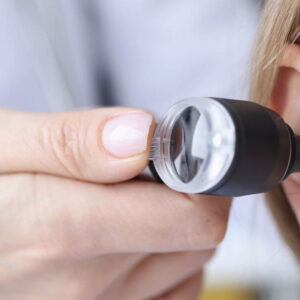
“Ear Tube Surgery”: Ear health, especially in childhood, has a major impact on overall health and development. Problems such as fluid accumulation in the middle ear, recurrent middle ear infections, or hearing loss can lead to permanent hearing impairment and delays in speech and language development if not treated promptly and correctly. In such cases, ear tube surgery offers a safe and effective solution.
In Istanbul, ENT specialist Prof. Dr. Ozan Seymen—who serves patients in his own clinic—provides scientifically grounded and personalized approaches in ear tube surgery to help his patients achieve a healthy quality of life.
In this article, we will comprehensively cover what ear tube surgery is, why it’s necessary, how it’s performed, who is a candidate, and what the postoperative recovery process looks like.
What Is an Ear Tube?
An ear tube (ventilation tube or tympanostomy tube) is a small plastic device placed in the eardrum through a minor surgical intervention.
This tube allows fluid accumulated in the middle ear to drain outward and balances the pressure difference on both sides of the eardrum. As a result, the middle ear is ventilated, infection risk is reduced, and hearing function is preserved.
Ear tubes are placed temporarily and usually fall out into the external ear canal on their own within 6 months to 1.5 years.
Prof. Dr. Ozan Seymen selects the most appropriate type of ear tube based on patient age, ear condition, and individual needs.
Why Is Ear Tube Surgery Performed?
Ear tube surgery is an effective method for treating various conditions:
- Middle Ear Fluid Accumulation (Otitis Media with Effusion): Fluid in the ear can cause hearing loss, fullness, and pressure sensations.
- Recurrent Middle Ear Infections: Tubes are placed to reduce infections in individuals who experience three or more infections per year.
- Chronic Otitis Media: Tube placement may be needed when long-term middle ear inflammation does not resolve with medication.
- Hearing Loss: In children especially, hearing loss can lead to delays in speech and language development, so ear tubes help preserve hearing function.
- Pressure Problems: For individuals who experience severe ear pain during flights or diving, tubes can equalize pressure.
Prof. Dr. Ozan Seymen determines the indications for ear tubes based on detailed examination and hearing tests in accordance with scientific criteria.
Who Is a Candidate for Ear Tube Surgery?
Suitable candidates include:
- Children or adults with middle ear fluid for longer than three months
- Individuals with recurrent middle ear infections
- Those with significant hearing loss due to middle ear fluid
- Patients at risk of complications from middle ear infections (e.g., risk of meningitis)
- Individuals experiencing severe ear pain from pressure changes
Timely placement of ear tubes is especially important in children for speech development, school performance, and social communication.
Prof. Dr. Ozan Seymen carefully evaluates each patient’s individual situation before deciding on surgery.
How Is Ear Tube Surgery Performed?
Ear tube surgery (myringotomy and tube insertion) is a simple and quick procedure. It is usually performed under local anesthesia in adults and general anesthesia in children.
The procedure proceeds as follows:
- Incision: A small cut (myringotomy) is made in the eardrum to allow fluid to drain.
- Fluid Removal: The infected or clear fluid in the middle ear is suctioned out.
- Tube Placement: A small ventilation tube is placed into the incision. This tube ventilates the middle ear and prevents fluid re-accumulation.
The procedure typically takes 10–20 minutes. Patients are discharged the same day and can return to daily life quickly.
Prof. Dr. Ozan Seymen aims for maximum effectiveness with minimal trauma in ear tube surgery, prioritizing patient comfort.
Postoperative Recovery
Recovery is generally fast and uneventful, but certain precautions are necessary:
- First days: Mild ear discharge or slight bloody fluid is normal.
- First week: Protect the ear from water—ensure no water enters during bathing.
- First month: Regular follow-up visits are required to confirm the tube’s correct position and function.
- Recovery period: Most patients resume normal activities within days, but swimming and water sports should be postponed until approved by the surgeon.
Prof. Dr. Ozan Seymen provides detailed postoperative care instructions and closely monitors recovery to detect any issues early.
Risks and Complications
Although ear tube surgery is safe, rare risks include:
- Temporary ear discharge
- Scar tissue formation on the eardrum
- Early tube extrusion or prolonged retention
- Persistent perforation after tube extrusion (very rare)
- Recurrent infections
These risks can be minimized with proper technique and careful follow-up.
Prof. Dr. Ozan Seymen uses the latest surgical techniques to maximize safety and treatment success.
What Happens After the Tube Falls Out?
Ear tubes usually fall out on their own between 6 and 18 months. After tube extrusion:
- The eardrum often closes spontaneously.
- Middle ear ventilation returns to normal.
- Hearing function is preserved or improved.
If the eardrum fails to close, a minor surgical repair (myringoplasty) may be required.
Prof. Dr. Ozan Seymen schedules regular follow-ups to ensure long-term ear health.
Pricing
Costs vary according to:
- Type and quality of the tube used
- Local versus general anesthesia
- Patient age and coexisting health conditions
- Surgeon’s experience and clinic facilities
In Istanbul, Prof. Dr. Ozan Seymen provides personalized treatment plans with transparent pricing that typically includes preoperative consultation, procedure fees, materials, and postoperative follow-ups.
Is Ear Tube Surgery Painful?
No—anesthesia prevents pain during the procedure. Postoperative discomfort is brief and mild.
Does the Tube Cause Pain When It Falls Out?
No—the tube usually extrudes naturally and painlessly; most patients don’t even notice.
Can I Swim with the Tube In Place?
Swimming is possible with protective measures—use special earplugs and avoid high-risk activities like diving.
Can Infections Still Occur?
In rare cases, yes—but infections tend to be milder and more easily treated.
Will I Need Another Tube?
If fluid or infection persists, a second tube placement may be necessary, though this is uncommon.
Ear tube surgery is a reliable treatment for middle ear problems in children and adults, preserving hearing, preventing infections, and improving quality of life. With proper patient selection, precise surgical technique, and diligent follow-up, success rates are very high.
In Istanbul, ENT specialist Prof. Dr. Ozan Seymen—who serves patients in his own clinic—provides modern surgical principles and personalized treatment approaches to deliver safe, comfortable, and effective solutions.
If you seek a lasting solution for middle ear issues, contact Prof. Dr. Ozan Seymen for detailed information and a personalized treatment plan to begin your journey to better ear health.









 Türkçe
Türkçe Français
Français Deutsch
Deutsch